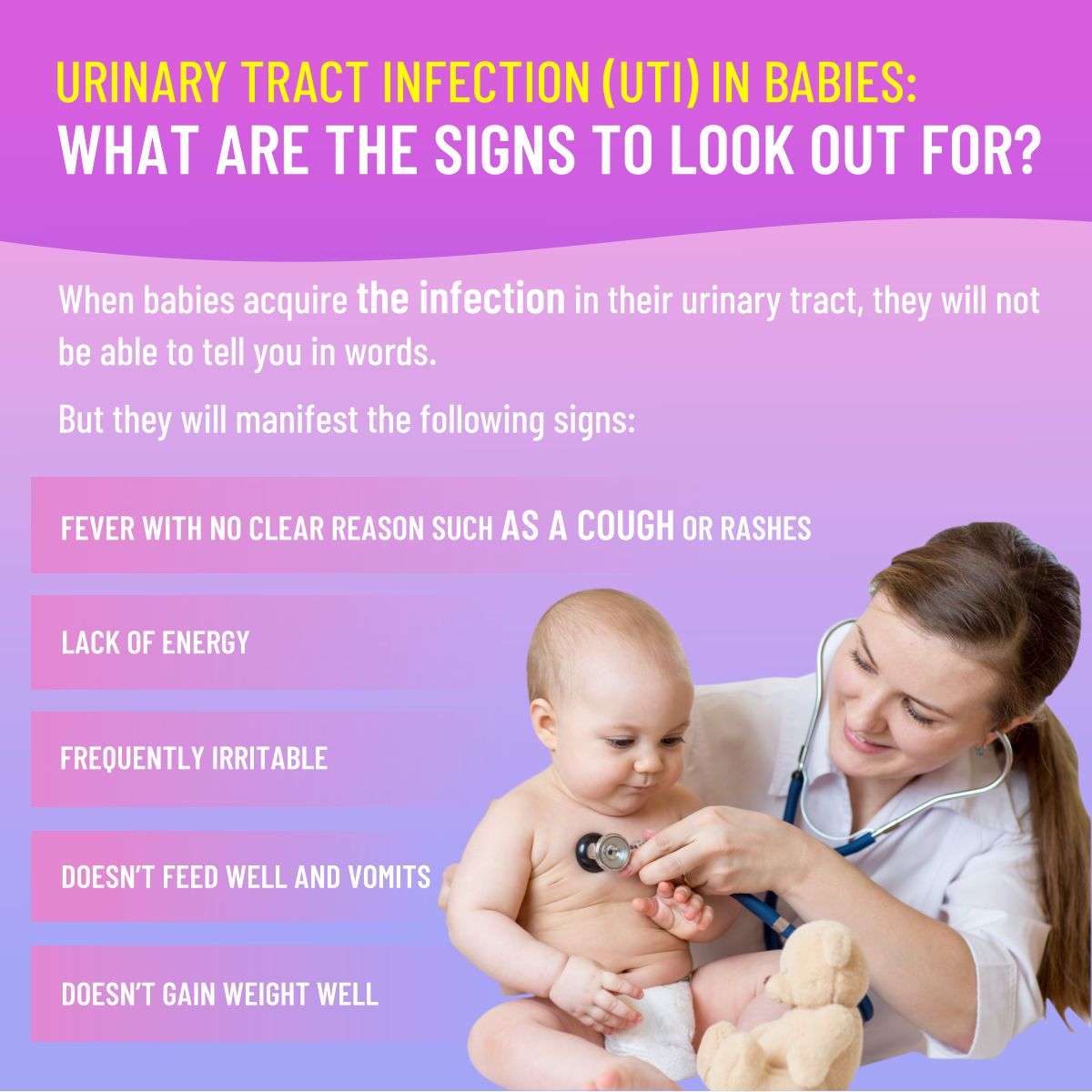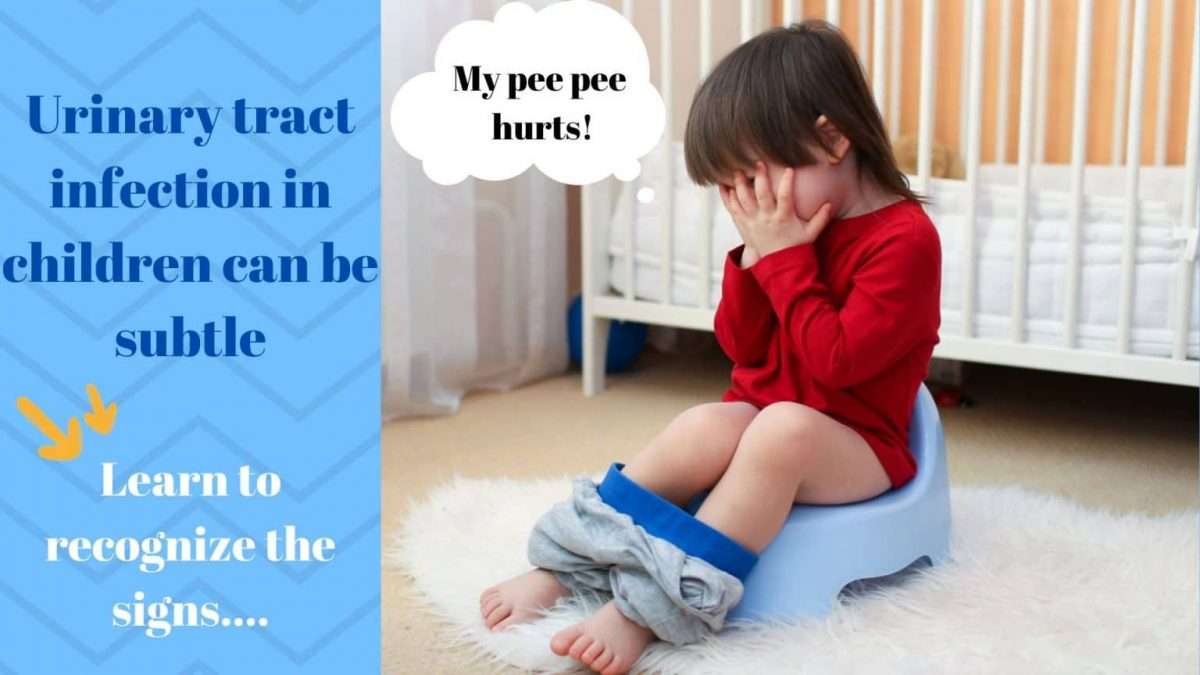Who Gets Utis Which Children And Toddlers Are At Risk
UTIs are most common in immunosuppressed children and children who have been on antibiotics for a long period of time for other issues. If your child recently went through an organ transplantation, they are also more vulnerable to a urinary tract infection. Children can also be born with abnormalities of their urinary tract that make them more likely to get an infection.
Adults are also vulnerable to urinary tract infections.
How Can You Prevent Utis In The Future
Change your baby’s diapers often to prevent bacteria from growing. As your child gets older, teach them good bathroom habits to prevent UTIs. Instruct girls to wipe from front to back. This helps to prevent bacteria in poop from getting into the vagina and urinary tract. Encourage your kids to go to the bathroom as soon as they feel the urge — not to hold it in.
Girls should avoid bubble baths and should not use perfumed soaps. And, they should wear cotton underwear — not nylon — to improve airflow and prevent bacteria from growing.
Have your kids drink lots of water, which helps flush bacteria out of the urinary tract. Extra water also prevents constipation, which can create blockages in the urinary tract that allow bacteria to grow.
What Are Some Good Bathroom Habits That My Child Should Follow
-
Teach your daughter to wipe herself from front to back after she goes to the bathroom.
-
Teach your daughter to lower her pants and underpants to her ankles and to sit comfortably on the toilet. If her feet don’t touch the floor, put a step stool in front of the toilet, so she can put her feet on it and be comfortable.
-
Teach your son to completely open his pants and underpants so his penis isn’t pressed by clothing when he is urinating.
-
Teach your child to urinate regularly. Tell your child to not hold in urine for a long time. Going to the bathroom frequently can help prevent UTIs. Children who have had repeat UTIs should urinate every 1½ to 2 hours during the day. Drinking lots of fluids will help your child urinate more often.
-
Treat constipation. Constipation can give your child a sudden need to urinate.
-
Teach your child to empty the bladder all the way when he or she urinates. No quickie bathroom visits during a TV commercial!
-
Give your child antibiotics only when your doctor tells you to. Antibiotics can kill the good bacteria that normally live on the skin of the genital area. When the good, protective bacteria are gone, harmful bacteria can grow and cause a UTI.
Don’t Miss: Home Remedies For Urinary Frequency
Eating Diet & Nutrition
Food choices do not help prevent or treat bladder infections in children, but drinking plenty of liquids may help. Talk with a health care professional about how much liquid your child should drink, depending on his or her age, size, and other health conditions.
The National Institute of Diabetes and Digestive and Kidney Diseases and other components of the National Institutes of Health conduct and support research into many diseases and conditions.
Symptoms Of A Urine Infection

- Increased frequency and difficulty while urinating
- Sense of urgency to go to the bathroom
- Pain or burning when urinating
- Occasionally, blood in the urine
- Mild fever
- Lower abdomen pain
- Itching or burning in the genitals
A urinary infection consists of bacteria invading one or more parts of the urinary tract. In addition, fungi, viruses, parasites or microbes can also cause UTIs.
Read Also: Can I Use Azithromycin For Urinary Tract Infection
How Will My Doctor Test For A Urinary Tract Infection
To diagnose a UTI, your doctor will need one or two urine samples to see if there is inflammation or bacteria. Urine collected for bacteria needs to be free of skin or stool contamination. How you provide the sample may depend on your childs age:
- If you have an infant, a doctor or nurse may use a catheter so urine can be collected in a sterile bag for testing. This is the best way to test for a UTI.
- If your child is toilet-trained, they will need to provide a mid-stream urine sample in a sterile cup or jar. Mid-stream means that the child pees a little bit and then you collect the urine.
Which Part Of The Urinary Tract Is Affected In Urinary Tract Infections
Urinary tract infections can affect any part of the urinary tract. When they affect the urethra, the tube in which urine flows out of the body, theyre called urethritis. When they affect the bladder, which stores urine, theyre called cystitis. And when they affect the kidneys, theyre called pyelonephritis.
Read Also: Bard Urinary Drainage Bag With Anti Reflux Dome
What Causes A Urinary Tract Infection In Toddlers
Normal urine is sterile and contains fluids, salts and waste products. An infection occurs when microorganisms cling to the opening of the urethra and begin to multiply. Most infections arise from Escherichia coli bacteria that normally live in the digestive tract.
Different bacteria can cause a urinary tract infection. The seven most common bacteria include the following:
- Escherichia coli , found in about 85% of UTIs in children.
- Klebsiella.
- Pain in the back or side .
- Fatigue.
Collecting A Urine Sample
Collecting a urine sample from a child can sometimes be difficult, especially in babies and young children.
If you’re not sure what to do or need some help collecting the urine sample, ask a doctor or nurse for advice.
In young children who are toilet trained, you’ll usually be asked to collect a urine sample using a sterile bottle provided by your GP surgery.
Collect a sample by holding the bottle in the stream of urine while your child is urinating. Make sure nothing touches the open rim of the bottle, as this could affect the result.
If you’re unable to collect a clean sample, it may be collected using a special absorbent pad that you put in your baby’s nappy. A urine sample is then sucked out of the pad using a syringe.
If a urine sample is very difficult to collect at home or in a GP surgery, you may need to go to a hospital.
In such cases, a urine sample can be obtained by inserting a small plastic tube called a catheter into your child’s urethra.
Also Check: How Can You Treat Urinary Tract Infection
Suggestions That May Help Some Children
Parents often want to know what they can do to prevent UTIs. Not all UTIs can be prevented, but here are some suggestions that may help some children:
- treat any constipation
- encourage your child to go to the toilet regularly when they feel the need
- encourage your child to sit properly on the toilet with their feet on a stool so that they empty their bladder completely
- make sure your child drinks plenty of water with meals, and during hot weather
- teach girls to wipe their bottoms from front to back rather than back to front
There is a suggestion in studies of UTI in boys that circumcision might slightly reduce the incidence of UTI. But the benefit is small. Most specialists would not recommend circumcision for this reason unless there are repeated UTIs which are causing major health problems.
Treatment Of Uti In Children
Your childs UTI will require prompt antibiotic treatment to prevent kidney damage. The type of bacteria causing your childs UTI and the severity of your childs infection will determine the type of antibiotic used and the length of treatment.
The most common antibiotics used for treatment of UTIs in children are:
- nitrofurantoin
- sulfamethoxazole-trimethoprim
If your child has a UTI thats diagnosed as a simple bladder infection, its likely that treatment will consist of oral antibiotics at home. However, more severe infections may require hospitalization and IV fluids or antibiotics.
Hospitalization may be necessary in cases where your child:
- is younger than 6 months old
- has a high fever that isnt improving
- likely has a kidney infection, especially if the child is very ill or young
- has a blood infection from the bacteria, as in sepsis
- is dehydrated, vomiting, or unable to take oral medications for any other reason
Pain medication to alleviate severe discomfort during urination also may be prescribed.
If your child is receiving antibiotic treatment at home, you can help ensure a positive outcome by taking certain steps.
During your childs treatment, contact their doctor if symptoms worsen or persist for more than three days. Also call their doctor if your child has:
- a fever higher than 101F
- for infants, a new or persisting fever higher than 100.4F
You should also seek medical advice if your child develops new symptoms, including:
- pain
Recommended Reading: Azo Urinary Pain Relief For Males
How Serious Are The Infections In Children
Urinary infections in children usually go away quickly if they get medical care right away. But if your child keeps getting infections, your doctor may suggest tests to rule out more serious problems.
Urinary infections can lead to a serious infection throughout the body called . Problems from a urinary infection are more likely to happen in babies born too soon, in newborns, and in infants who have something blocking the flow of urine.
What Conditions Are Related To Recurrent Utis

Recurrent UTIs sometimes happen along with other conditions, such as:
- vesicoureteral reflux , which is found in 30%50% of kids diagnosed with a UTI. In this congenital condition, pee flows backward from the bladder to the ureters. Ureters are thin, tube-like structures that carry pee from the kidney to the bladder. Sometimes the pee backs up to the kidneys. If it’s infected with bacteria, it can lead to pyelonephritis.
- hydronephrosis, which is an enlargement of one or both kidneys due to backup or blockage of urine flow. It’s usually caused by severe VUR or a blocked ureter. Some kids with hydronephrosis might need to take daily low doses of antibiotics to prevent UTIs until the condition producing hydronephrosis gets better or is fixed through surgery.
But not all cases of recurrent UTIs can be traced back to these body structure-related problems. For example, dysfunctional voiding when a child doesn’t relax the muscles properly while peeing is a common cause of UTIs. Not peeing often enough also can also increase a child’s risk for recurrent infections. Both dysfunctional voiding and infrequent urination can be associated with constipation.
Rarely, unrelated conditions that harm the body’s natural defenses, such as diseases of the immune system, also can lead to recurrent UTIs. Use of a nonsterile urinary catheter can introduce bacteria into the urinary tract and also cause an infection.
You May Like: How To Cure A Urinary Tract Infection In A Woman
How Are Urinary Abnormalities Diagnosed
It’s important for a doctor to rule out any underlying problems in the urinary system when a child gets UTIs repeatedly. Kids with recurrent infections should see a pediatric urologist to see what is causing the infections.
Some problems can be found before birth. Hydronephrosis that develops before birth can be seen in an ultrasound as early as 16 weeks. In rare cases, doctors may consider neonatal surgery if hydronephrosis affects both kidneys and is a risk to the fetus. Most of the time, though, doctors wait until after birth to treat the condition, because almost half of all cases seen prenatally disappear by the time a baby is born.
Doctors will closely watch the blood pressure of a newborn thought to have hydronephrosis or another urinary system abnormality, because some kidney problems can cause high blood pressure. Another ultrasound may be done to get a closer look at the bladder and kidneys. If the condition appears to be affecting both kidneys, doctors usually will order blood tests to check kidney function.
How Is It Diagnosed
If your child has symptoms of a UTI, see your pediatrician. The doctor will take a urine sample and test it for bacteria. They can collect urine in a number of ways:
- Older children can pee into a cup .
- Younger children who aren’t toilet trained will have a plastic bag placed over their genitals to collect the urine.
- Children who wear diapers can have a tube inserted into their urethra and bladder to collect the sample.
- In infants, the doctor can place a needle straight into the bladder through the stomach to get the sample.
At the lab, a technician looks at the sample under a microscope to see whether germs are in the urine. It might also be cultured — that means the lab tech places the urine in a dish to see what type of bacteria grow in it. This can help your doctor find the exact germs that caused your childâs UTI so theyâll know the right type of medicine to prescribe to kill them.
If your child has had a few UTIs, your doctor might refer you to a nephrologist and do one or more of these imaging tests to look for problems in the urinary tract:
Also Check: Does Tylenol Help Urinary Tract Infections
How Is A Uti Diagnosed In A Child
The healthcare provider will ask about your childs symptoms and health history. The provider will give your child a physical exam. Your child may also have tests, such as:
- Urine testing. This is also known as urinalysis. Your childs urine is sent to a lab to check for red blood cells, white blood cells, bacteria, protein, and signs of infection. The urine will also be sent for a culture and sensitivity. This is done to figure out what type of bacteria is causing the infection and what medicine is best to treat the infection.
- Kidney ultrasound. This is a painless imaging test. It uses sound waves and a computer to make images of blood vessels, tissues, and organs. It can show internal organs as they function and can assess blood flow through vessels. A boy with a UTI or a girl younger than age 5 or 6 may need this test.
- Voiding cystourethrogram . This is a type of X-ray of the urinary tract. A thin, flexible tube is put in the tube that drains urine from the bladder to the outside of the body . The bladder is filled with a liquid dye. X-ray images are taken as the bladder fills and empties. The images will show if there is any reverse flow of urine into the ureters and kidneys.
Treatment If The Condition Gets Worse Or Recurs
If your child’s urinary tract infection does not improve after treatment with antibiotics, your child needs further evaluation and may need more antibiotics. Your child may have a structural problem that is making the infection hard to treat. Or the cause of the infection may be different from the types of bacteria that usually cause UTIs.
If the infection spreads and affects kidney function or causes widespread infection , your child may be hospitalized. These complications are rare, but they can be very serious. Children with impaired immune systems, untreated urinary tract obstructions, and other conditions that affect the kidneys or bladder are at higher risk for complications.
If tests show a structural problem in the urinary tract that increases your child’s risk for recurrent UTIs, the doctor may consider preventive antibiotics.
You May Like: Can Urinary Tract Infection Cause Elevated Psa
Uti Prevention And Treatment
Active UTIs are treated with antibiotics for 3-10 days, depending on the severity. Some children need to stayon a low, prophylactic dose of antibiotics for a short while to break the cycle of frequently recurring infections.
Children with voiding dysfunction may require medicines to relax their bladder or medicines to relax their bladder neck . Brenner Children’s recommends all children with recurrent infections should be placed on a timed scheduleof emptying their bladder every 2 hours while awake.
If there is a congenital, anatomic abnormality causing the infections, then this anomaly can often be repaired with surgery.
Tests For Urinary Tract Infections
Doctors need to test your childs urine to diagnose a urinary tract infection . Your doctor might get you to catch some of your childs urine in a clean specimen jar. Or your doctor might use a catheter or needle to collect a urine sample.
Some children, particularly boys less than 3 months old and children who are very unwell with a UTI, need an ultrasound to make sure there are no problems in their urinary tracts. If a problem is identified, your child might be referred to a paediatrician, urologist or renal physician.
Also Check: How Are Urinary Tract Infections Caused
How Are Utis Diagnosed
To diagnose a UTI, health care providers ask questions about what’s going on, do an exam, and take a sample of pee for testing.
How a sample is taken depends on a child’s age. Older kids might simply need to pee into a sterile cup. For younger children in diapers, a catheter is usually preferred. This is when a thin tube is inserted into the urethra up to the bladder to get a “clean” urine sample.
The sample may be used for a urinalysis or a urine culture . Knowing what bacteria are causing the infection can help your doctor choose the best treatment.
How Can I Help Prevent Recurrent Utis

You can help your child reduce their risk of developing another UTI. Dr. Kronborg shares these suggestions to help prevent infections down the road.
Read Also: How To Get Rid Of Urinary Tract Infection Pain